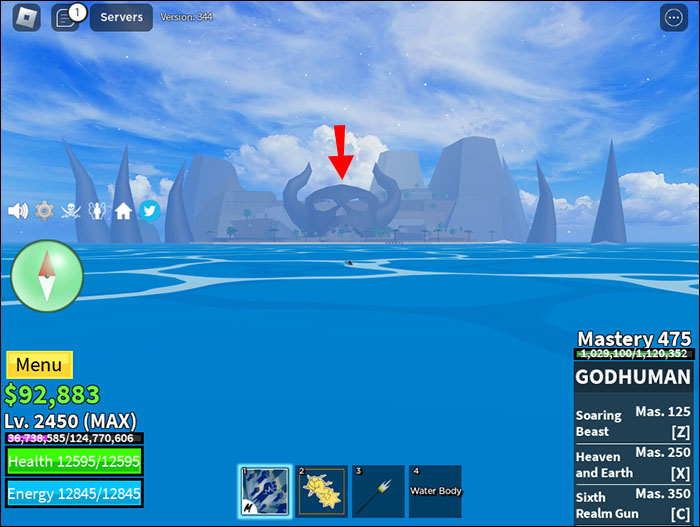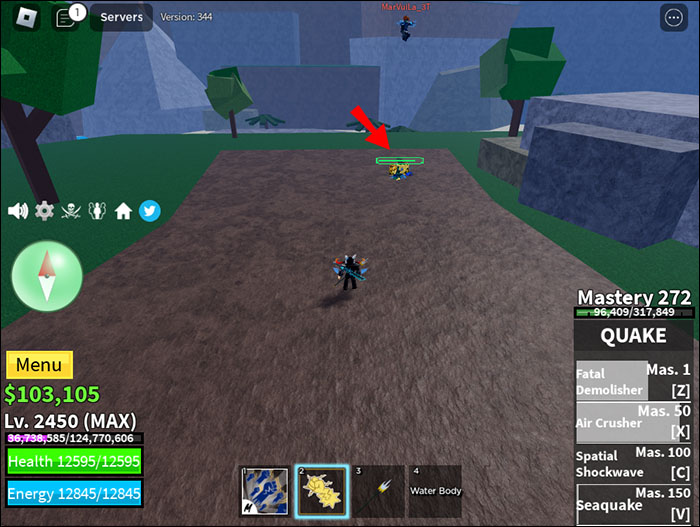Many Roblox games offer various possibilities for you to enjoy the game and play with friends. Blox Fruits is one of the favorite games for all anime, especially One Piece, lovers. Besides exploring, the central part of the game is fighting and learning combat skills, which help you get stronger and defeat other enemies and players.
There are 11 fighting styles in Blox Fruits, and each has its advantages and disadvantages. You can choose from Electric, Dark Step, Dragon Breath, Superhuman, Water Kung Fu, and more. This article will talk more about the Water Kung Fu style, how to obtain it, upgrade it, and which spells you learn by mastering it.
Obtaining the Water Kung Fu Fighting Style in Blox Fruits
Finding necessary NPCs called Teachers from whom you learn different fighting styles can be pretty straightforward. Water Kung Fu is more of the same. However, some players find it hard to find the Water Kung Fu Teacher since he is not standing in plain sight.
This is what you need to do to find this teacher and learn Water Kung Fu:
- From the safe zone or the starter island, head into the First Sea.

- When you notice a fountain structure, head left, or if you’re coming from a different direction, swim or travel until you find three small islands.

- Upon reaching the islands, also known as Fisherman Islands, you will see a vortex or a whirlpool. Jump inside it.

The Fisherman Islands will be forming a triangle around the whirlpool, which is hard to miss when you get closer to it. After jumping inside, you will spawn in the Underwater City. This is where you need to find the Water Kung Fu Teacher NPC.
- Head to the right and pass the big tree and continue running until you reach the back of this area.

- You need to find the purple wall and head inside.

- Talk to the NPC and learn the skill.

When you find the purple wall, you will see that the color of one part of the wall is a darker shade. Besides this darker wall part, go left to the corner and walk inside. Note that you need to have 750,000 currencies to unlock Water Kung Fu.
Moreover, besides this location, the Teacher NPC can be found in two more places.
- Hot and Cold – Islands located in the Second Sea.
- Castle on the Sea – This castle is located in the Third Sea.
Reaching the second location can be tricky, and there are few ways to get to the Castle of the Sea. Try one of these:
- Navigating to the Hydra Island and using Portals
- Finding The Mansion
- Going through the docks
Water Kung Fu Skills
Apart from the Water Kung Fu basic attacks, you’ll receive three skills after you learn this fighting style. The first one is unlocked when you reach level 70 while fighting using Water Kung Fu style. You’ll need to defeat about a dozen enemies to start leveling these skills.
Steam Charged Fist
The first skill is called Steam Charged Fist. This is a ranged ability that knocks back the enemies and deals damage.
Deadly Shower
The second skill is unlocked when you reach the 130th level or mastery. Deadly Shower is another ranged skill you can use from a more considerable distance than Steam Charged Fist. This skill deals a lot of AoE damage to the enemy and slows them. You can throw it from the air as well.
Heavy Water Punch
The last Water Kung Fu skill is Heavy Water Punch, unlockable at level 250. This one is harder to get and takes more time. Heavy Water Punch charges a dash toward the enemy, knocking them back and dealing damage. You can also throw this spell from the air.
Upgrading Water Kung Fu Fighting Style in Blox Fruits
If you choose the Water Kung Fu fighting style, you should be aware that this style can be upgraded when specific requirements are fulfilled. The upgrade is called Sharkman Karate, and you can unlock it after you reach mastery 400. If you’ve mastered all your skills for Water Kung Fu, you should be at level 250, meaning you only need 150 more to unlock the more robust upgrade.
After you finish killing mobs and maxing your Water Kung Fu mastery, you should:
- Go to the Green Zone located in the Hot and Cold Island.

- Navigate to the Hot Side, which is right from the Ice Castle.

- Head to the back of the Forgotten Island.

- Find the Tide Keeper boss and defeat him and loot him for the Water Key.

If you don’t find the Water Key right away, don’t worry; the drop chance is between 15% and 30%. You might need to kill him a few more times before acquiring this item. If you got it on the first try, you need to talk with another NPC. Daigrock will offer you the opportunity to buy the Sharkman Karate if you meet the requirements. Also, you need 2,500,000 currencies and 5,000 Fragments to do so.
If you don’t have enough money to buy the upgrade, you have to go back and do more quests. Furthermore, Fragments should be easier to obtain, considering you don’t need much time. All you need to do is Fruit Raids a couple of times.
Sharkman Karate Skills
Sharkman Karate is one of the most robust fighting styles in the game, and it is worth getting it if that’s your preferred fighting style besides guns, weapons, and such. You can unlock three different skills, and they are:
- Twelve Water Palms – This is the first skill you can unlock at level 100 of Sharkman Karate. This skill lets you dash toward your enemy, deal damage, and knock them back. You actually use 12 palm strikes to strike the enemy.
- Pressure Vortex – Pressure Vortex can be obtained by reaching 200 mastery points. This skill is ranged and allows you to deal damage and graze the enemies. If you use it on melee, you can also drag them, which can deal even more damage. You can also break Instinct with it.
- Great Sea Spear – This skill visually resembles the Pressure Vortex, except it deals more damage. When you hit the mob with this ability, they get dragged toward you; at this point, you throw the Great Sea Spear and deal damage while knocking them back.
The Sharkman Karate is a lot stronger fighting style than Water Kung Fu. The skills become AOE, which deals a higher amount of damage, especially to Sea Beast. You move quicker, and the range is better. The hitbox for the first two spells is excellent. However, one disadvantage of this fighting style is the ranged position. It’s not easy to hit a moving target when you’re Sharkman Karate, and this may leave you unprotected and vulnerable.
Becoming the Master of Water Elements
If you want to learn how to control the water and use water abilities to harm your enemies, the Water Kung Fu style is the right one for you. Water Kung Fu is not hard to unlock when you realize where to find the Teacher. After unlocking its abilities, you can use the full potential of this fighting style, and in case you lack damage, there is always the Sharkman Karate.
Which fighting style do you prefer? Do you use Guns, Swords, Fruits, or fighting style as your primary combat skill? Let us know in the comments section below.
Disclaimer: Some pages on this site may include an affiliate link. This does not effect our editorial in any way.


















